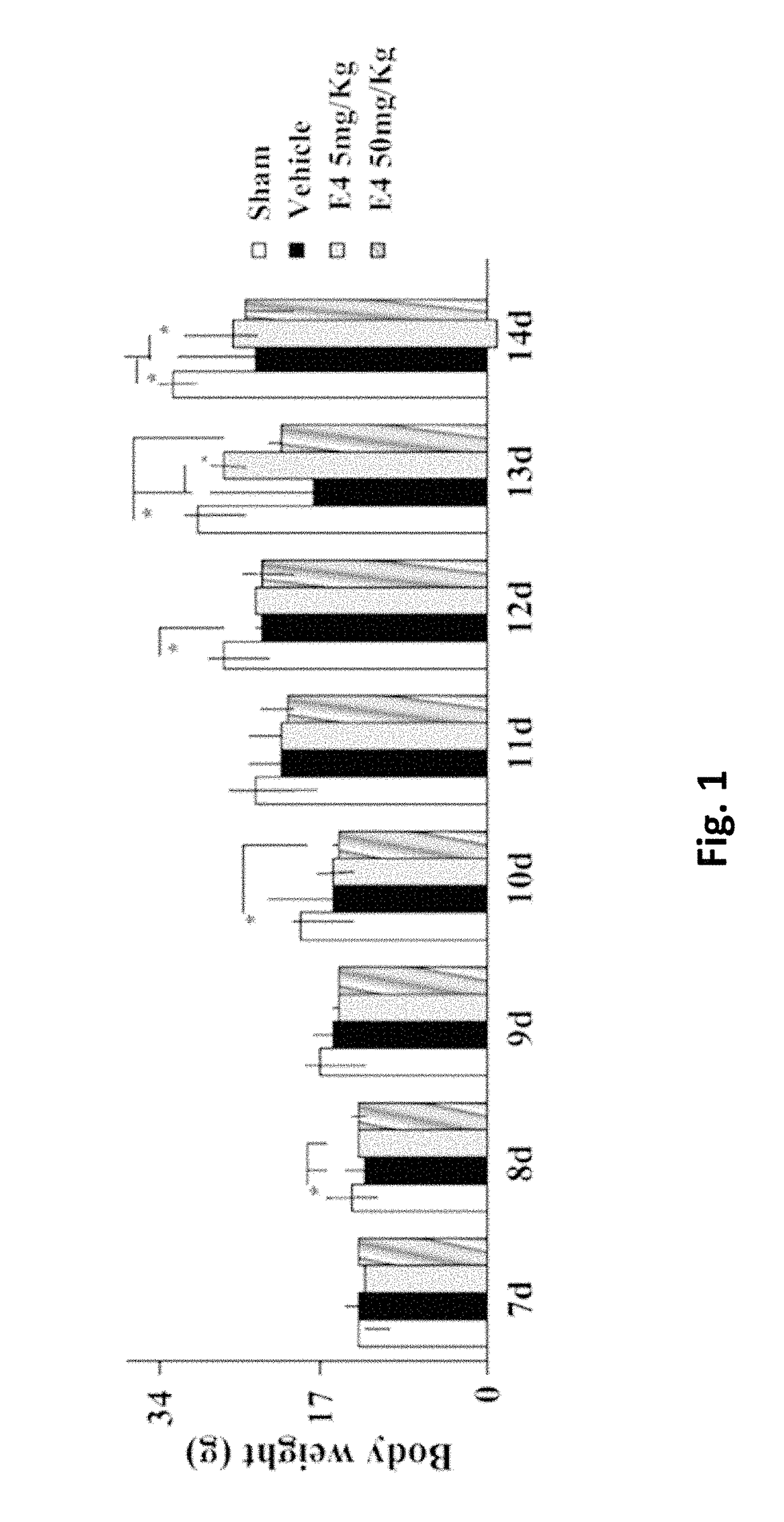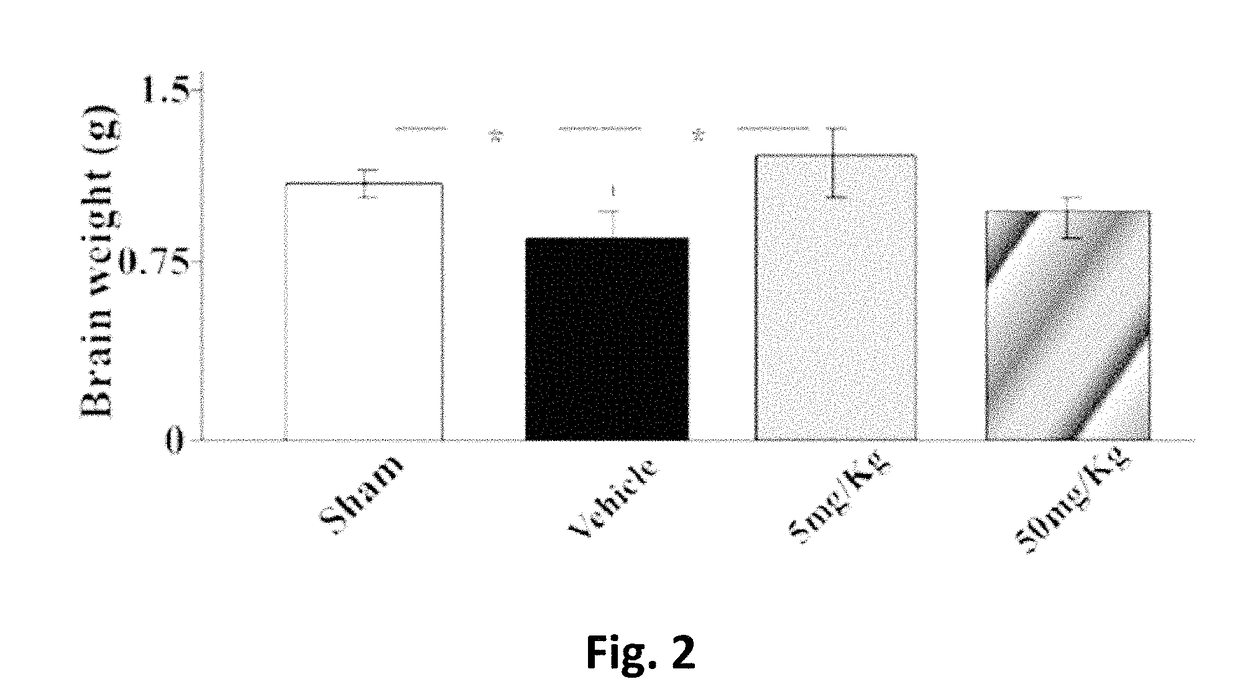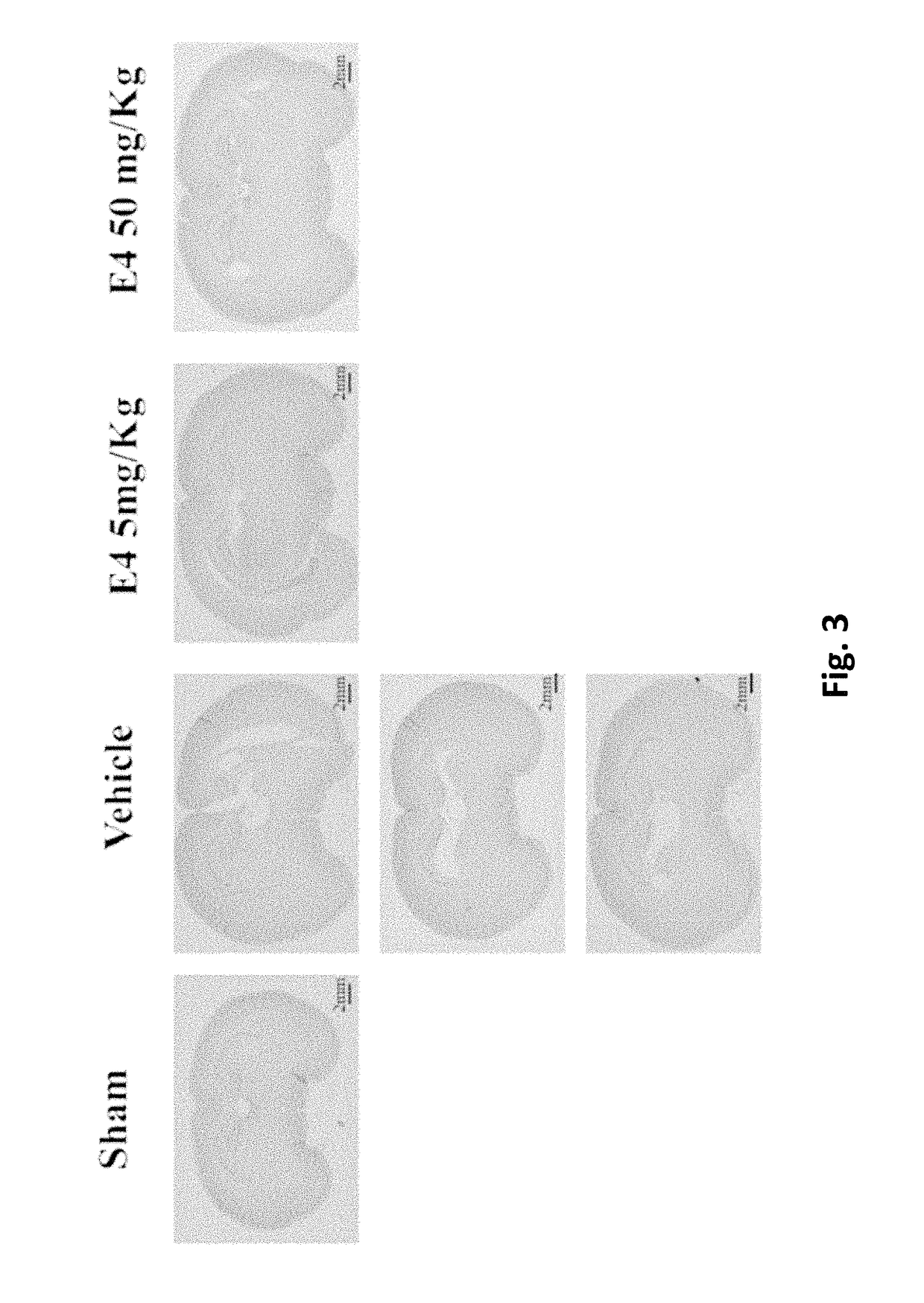Estrogenic components for use in the treatment of neurological disorders
a technology for neurological disorders and estrogenic components, which is applied in the field of estrogenic components for use in the treatment of neurological disorders, can solve the problems of neurological disabilities, mental retardation or cerebral palsy, neurological disabilities, and impede blood flow transfer, and achieves less brain injury, advantageous therapeutic effects, and promote neurogenesis and vasculogenesis
- Summary
- Abstract
- Description
- Claims
- Application Information
AI Technical Summary
Benefits of technology
Problems solved by technology
Method used
Image
Examples
example 1
tal Procedures
[0198]Study Animals:
[0199]Sprague-Dawley pregnant rats were obtained from Janvier (France). After delivery newborn rat pups were housed with their dams and reared normally at room temperature (25° C.) under a 12-hour light-dark cycle. All experimental protocols were approved by the University of Liege Ethical Committee. All efforts were made to minimize animal suffering.
[0200]In Vivo Manipulations:
[0201]Newborn rat pups were assigned to Sham group, Vehicle group, or E4 group.
[0202]Estetrol (E4) was dissolved in saline solution at different concentrations and an equal volume (5 μl / g) of the solution was injected intraperitoneally into the pups from the E4 group(s). Rat pups from the Vehicle group were intraperitoneally injected a saline solution. Rat pups from the Sham group were not injected at all.
[0203]Ischemia was produced by surgery encompassing left common carotid artery double ligation and cut; hypoxia was produced by the inhalation of 11%-8% of oxygen balanced b...
example 2
ective Effect of Estetrol in an Animal Model of Neonatal Hypoxic-Ischemic Encephalopathy
[0225]After delivery, newborn rat pups were assigned to one of the following 4 groups: Sham group, Vehicle group, E4 5 mg / kg / per day group and E4 50 mg / kg / per day group. From day 4 to day 7 inclusive, rat pups were injected intraperitoneally either vehicle (Vehicle group) or E4 (5 mg / kg or 50 mg / kg in accordance to the group assignment) or not injected at all (Sham group). At day 7, 30 minutes after last injection, animals from Vehicle and E4 (5 mg / kg or 50 mg / kg) groups passed through surgery encompassing left common carotid artery double ligation and cut, followed by hypoxia produced by the inhalation of 11%-8% of oxygen balanced by nitrogen at decreased concentration for 20 minutes, followed by inhalation of 8% oxygen and 92% nitrogen at constant concentration for 35 minutes. The Sham group went through similar procedures without left common carotid artery ligation and hypoxia. All the manipul...
example 3
ective Effect of Estetrol in an Animal Model of Neonatal Hypoxic-Ischemic Encephalopathy
[0235]Newborn rat pups were assigned to one of the following 6 groups from postnatal day 4: Sham group (n=24), Vehicle group (n=14), E4 1 mg / kg / per day group (n=11), E4 5 mg / kg / per day group (n=14), E4 10 mg / kg / per day group (n=14), or E4 50 mg / kg / per day group (n=19). From postnatal day 4, rat pups were intraperitoneally injected either vehicle (Vehicle group) or E4 (1, 5, 10, or 50 mg / kg / per day in accordance to the E4 group assignment) or neither vehicle nor E4 (Sham group). At day 7, 30 minutes after last injection, animals were anesthetized with isoflurane (induction, 3.0%; maintenance, 1.5%), and the rat pups from Vehicle and E4 groups passed through surgery encompassing left common carotid artery double ligation and cut. After the procedure, the pups were returned to their dams and were allowed to recover for 1 hour. The pups were then placed in the humidified hypoxic in vivo cabinet (CoyL...
PUM
 Login to View More
Login to View More Abstract
Description
Claims
Application Information
 Login to View More
Login to View More - R&D
- Intellectual Property
- Life Sciences
- Materials
- Tech Scout
- Unparalleled Data Quality
- Higher Quality Content
- 60% Fewer Hallucinations
Browse by: Latest US Patents, China's latest patents, Technical Efficacy Thesaurus, Application Domain, Technology Topic, Popular Technical Reports.
© 2025 PatSnap. All rights reserved.Legal|Privacy policy|Modern Slavery Act Transparency Statement|Sitemap|About US| Contact US: help@patsnap.com



